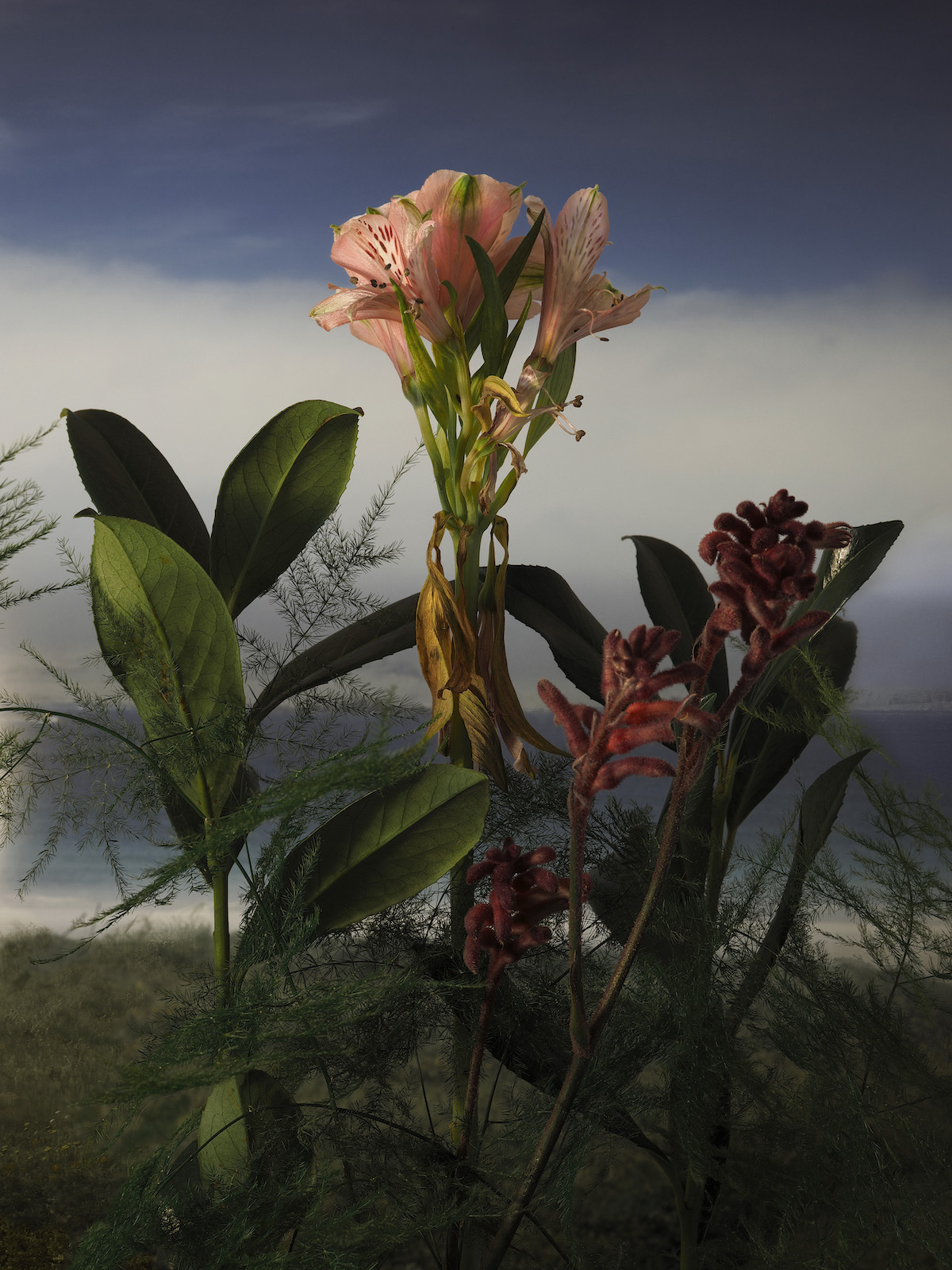Gilded Lilies
© Tine PoppePortraits of cut flowers in constructed landscapes
Born and bred in industrial-scale greenhouses, cut flowers have no contact with nature and generate high CO2 emissions - not unlike humans in the Western world.
Flowers are potent symbols. People around the world use them to mark rites of passage and significant life events. In the Victorian era, flowers were considered the best medium to express feelings. Each type of flower was associated with a specific, symbolic meaning.
Previously the Western world’s supply of cut flowers was derived from locally run greenhouses. Today most of the flowers we buy in our stores have been transported by plane or lorries from industrial-scale digitally run greenhouses worldwide. Colombia, Ecuador and equatorial East Africa are the world's largest producers of cut flowers. Greenhouses contribute to high water use and chemical runoff. On top of pollutants and water use, flowers can generate serious carbon emissions because of refrigeration and long-haul transport. Stems may be transported up to 6000 miles in refrigerated aeroplane holds. When grown in cooler climates, flowers need heated greenhouses and generate high CO2 emissions because of their high electricity usage.
The portrayed cut flowers were shot against a background of prints of my own images from vulnerable areas of the world. When giving these magnificent flowers and plants close attention, they become a mysterious, dreamlike universe in themselves and a reminder of the incredible beauty of nature that we are at serious risk of losing.
click to view the complete set of images in the archive







